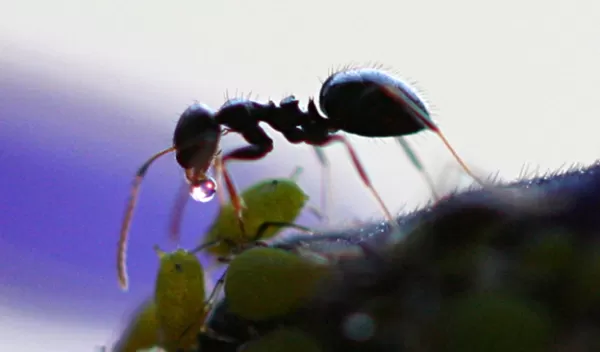
Researchers use artificial intelligence to create a 'treasure map' of undiscovered ant species
Although small, invertebrates have an outsized influence on their environments, pollinating plants, breaking down organic matter and speeding up nutrient cycling. And what they lack in stature, they make up for in diversity. With more than 1 million known species, insects alone vastly outnumber all other invertebrates and vertebrates combined.
Despite their importance and ubiquity, some of the most basic information about invertebrates, such as where they're most diverse and how many of them there are, remain a mystery. This is especially problematic for conservation scientists trying to stave off global insect declines; you can't conserve something if you don't know where to look.
In a U.S. National Science Foundation-supported study in the journal Science Advances, researchers used ants as a proxy to help close major knowledge gaps and hopefully begin reversing these declines.
Working for more than a decade, researchers from institutions around the world stitched together nearly 1.5 million location records from research publications, online databases, museums and scientific field work. They used the records to produce the largest global map of insect diversity, which they hope will be used to direct future conservation efforts.
"This is a massive undertaking for a group known to be critical ecosystem engineers," said co-author Robert Guralnick, curator of biodiversity informatics at the Florida Museum of Natural History. "It represents an enormous effort not only among all the co-authors but the many naturalists who have contributed knowledge about distributions of ants across the globe."
Creating a map large enough to account for the entirety of ant biodiversity presented several logistical challenges. All known ant species, which number more than 14,000, were included, with each species varying dramatically in the amount of data available.
Most of the records contained a description of the location where an ant was collected or spotted but did not always have the precise coordinates needed for mapping. Inferring the extent of an ant's range from incomplete records required some clever data wrangling.
The researchers ultimately formed a global map divided into a grid of 20 km by 20 km squares that estimated of the number of ant species per square, or species richness. They also created a map of the number of ant species with very small ranges per square, or species rarity. In general, species with small ranges are vulnerable to environmental changes.
The scientists used machine learning to predict how the diversity would change if they sampled all areas around the world equally, and in doing so, identified areas where many unknown, unsampled species exist.
"Work at this scale, bringing together years of natural history data with advanced computational modeling, is critical for understanding the geographic distribution of all biodiversity and improving our strategic conservation efforts in a rapidly changing world," said Shannon Fehlberg, a program director in NSF's Division of Environmental Biology.


